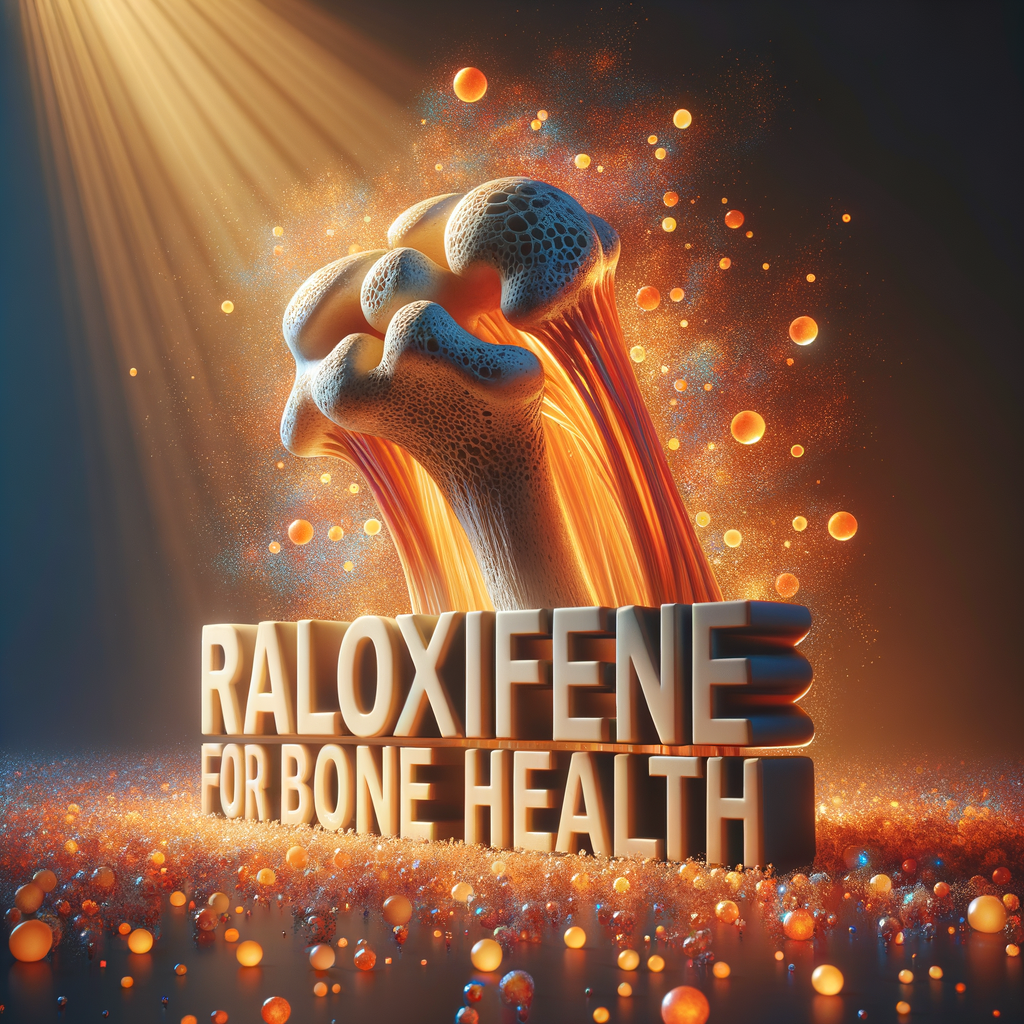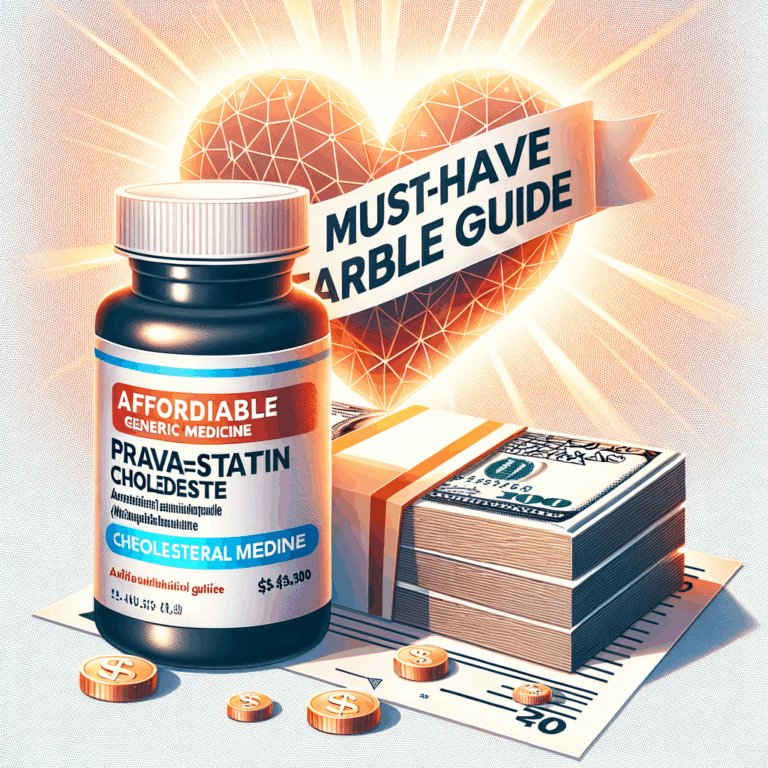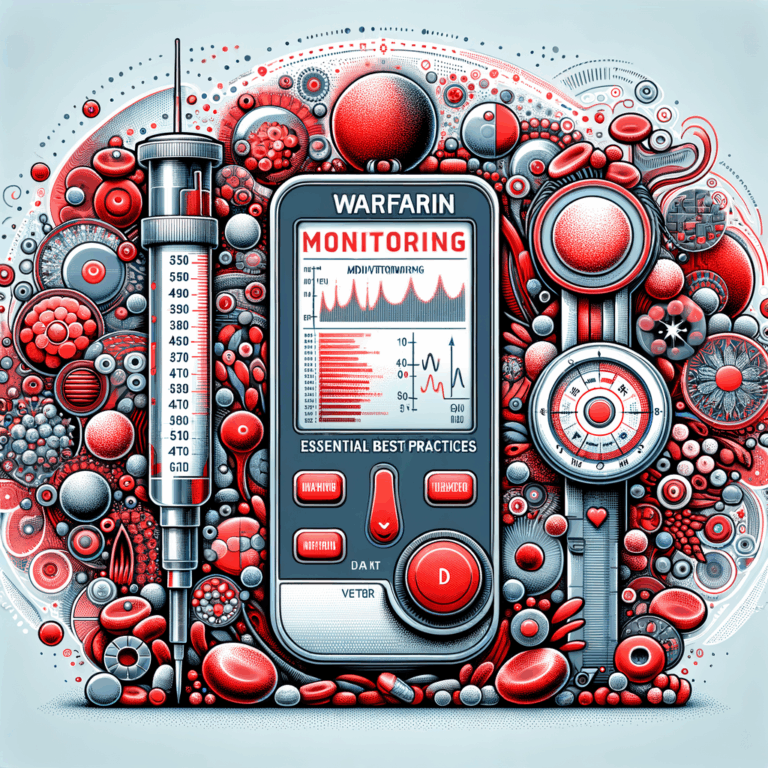
- Introduction
- What Is Raloxifene?
- How Raloxifene Works for Bone Health
- Key Benefits of Raloxifene for Bone Health
- Vertebral Fracture Reduction
- Breast Cancer Risk Reduction
- Who Benefits Most from Raloxifene?
- Dosage and Administration
- Safety Profile and Side Effects
- Common Side Effects
- Serious Risks and Contraindications
- Drug Interactions and Precautions
- Monitoring and Follow-Up
- Comparison: Raloxifene Versus Other Osteoporosis Treatments
- Cost and Affordability
- Ways to Save
- Practical Tips for Taking Raloxifene
- Lifestyle Changes That Support Bone Health
- Who Should Avoid Raloxifene?
- Clinical Evidence and Major Studies
- How to Talk to Your Clinician About Raloxifene
- Common Misconceptions
- Practical Decision-Making: Is Raloxifene Right for You?
- Real-World Patient Experience
- Future Directions and Research
- Conclusion
- FAQs
- 1. Can men take raloxifene for bone health?
- 2. How long should I stay on raloxifene?
- 3. Will raloxifene help if I already have osteoporosis-related fractures?
- 4. Can I take raloxifene with calcium and vitamin D?
- 5. Does raloxifene affect cholesterol?
- 6. Is raloxifene safe after breast cancer treatment?
- 7. How soon will I notice benefits from raloxifene?
- 8. Are there specific foods or drinks to avoid?
- 9. What should I do if I miss a dose?
- 10. Can raloxifene be used with other osteoporosis drugs?
- References
Introduction
Raloxifene for bone health offers a compelling mix of effectiveness and affordability. Many women and clinicians consider it when preventing and treating osteoporosis. This selective estrogen receptor modulator (SERM) acts like estrogen in bone but not in breast or uterus.
In this article, I will explain how raloxifene works. I will also review benefits, risks, and cost. You will find practical advice and comparisons to help make an informed choice.
What Is Raloxifene?
Raloxifene is a selective estrogen receptor modulator. It binds estrogen receptors in various tissues. This action mimics estrogen in bone. At the same time, it blocks estrogen effects in breast tissue.
Doctors often prescribe raloxifene to postmenopausal women. They use it to prevent and treat osteoporosis. They also prescribe it to reduce the risk of estrogen receptor-positive breast cancer.
How Raloxifene Works for Bone Health
Raloxifene binds to estrogen receptors in bone cells. It stimulates bone-forming activity and slows bone breakdown. Consequently, it improves bone mineral density and bone strength over time.
Also, raloxifene changes the balance of bone turnover. It reduces markers of bone resorption. Thus, bone loss slows and fracture risk declines. The mechanism helps explain why it protects against vertebral fractures.
Key Benefits of Raloxifene for Bone Health
Firstly, raloxifene reduces vertebral fracture risk. Large trials show fewer spinal fractures in treated women. The effect appears within one to two years of treatment.
Secondly, it can increase bone mineral density modestly. These improvements usually occur in the spine and hip. Thus, raloxifene helps strengthen common fracture sites.
Thirdly, raloxifene offers breast cancer risk reduction. It lowers the chance of estrogen receptor-positive breast cancer. Therefore, raloxifene can provide dual benefits for bone and breast health.
Vertebral Fracture Reduction
Clinical studies show raloxifene reduces vertebral fractures by about 30% to 50%. The reduction mainly occurs in women with low bone density. It still provides benefit for those without prior fractures.
However, raloxifene shows limited evidence for non-vertebral fractures. Studies do not consistently demonstrate reduced hip fracture risk. So, patients at high hip fracture risk might need alternative therapies.
Breast Cancer Risk Reduction
Raloxifene lowers the risk of invasive estrogen receptor-positive breast cancer. The effect is more pronounced in women at higher baseline risk. Thus, doctors sometimes use it for risk reduction in eligible patients.
Importantly, raloxifene does not increase uterine cancer risk. Unlike some hormone therapies, it does not stimulate uterine lining. This safety profile makes it attractive compared to certain menopausal therapies.
Who Benefits Most from Raloxifene?
Raloxifene suits postmenopausal women with osteoporosis or low bone mass. It especially helps those with vertebral fracture risk. Also, women seeking breast cancer risk reduction may benefit.
On the other hand, women with high hip fracture risk may need different medications. Likewise, premenopausal women typically do not use raloxifene. Always consult a clinician before starting treatment.
Dosage and Administration
The typical dose is 60 mg once daily. You can take it with or without food. Take it at the same time each day to maintain consistent blood levels.
Doctors usually recommend baseline bone density testing. They check bone mineral density with DXA before starting therapy. Then they repeat testing every one to two years for monitoring.
Safety Profile and Side Effects
Raloxifene commonly causes hot flashes and leg cramps. Many women report mild symptoms early in treatment. Symptoms often lessen over weeks to months.
More serious risks include increased blood clot risk. Raloxifene raises the chance of deep vein thrombosis (DVT) and pulmonary embolism (PE). Thus, it is unsuitable for women with a history of blood clots. Doctors also monitor for stroke risk in certain patients.
Common Side Effects
– Hot flashes
– Leg cramps
– Joint pain
– Swelling in the legs or feet
These side effects often respond to lifestyle changes or simple remedies. If symptoms persist, discuss alternatives with your clinician.
Serious Risks and Contraindications
Raloxifene increases thromboembolic events. Avoid it in women with prior DVT, PE, or stroke. Also, avoid it during pregnancy and breastfeeding. Women with severe liver disease should not take raloxifene.
Inform your provider about hormone therapy or medications that affect clotting. Also mention recent or planned surgeries that increase clot risk.
Drug Interactions and Precautions
Raloxifene interacts with certain medicines and supplements. Cholestyramine reduces raloxifene absorption. Anticoagulants require careful monitoring. Hence, always share your medication list with your provider.
Additionally, estrogen therapy may counteract raloxifene’s bone benefits. Therefore, doctors usually avoid combining systemic estrogen and raloxifene. In contrast, calcium and vitamin D support bone health and complement treatment.
Monitoring and Follow-Up
Doctors monitor bone density and side effects regularly. Typically, DXA scans occur every one to two years. They also monitor signs of blood clots and cardiovascular events.
Routine blood tests are not usually required. Yet, your doctor may check liver function if there are concerns. Report new swelling, chest pain, or sudden shortness of breath immediately.
Comparison: Raloxifene Versus Other Osteoporosis Treatments
Below is a simple comparison table to highlight differences.
| Feature | Raloxifene | Bisphosphonates | Hormone Therapy |
|---|---|---|---|
| Best for | Vertebral fracture prevention, breast cancer risk reduction | Vertebral and non-vertebral fracture prevention, hip protection | Menopausal symptoms and bone protection |
| Common dose | 60 mg daily | Weekly or monthly oral; yearly IV | Varies by formulation |
| Main risks | Clots, hot flashes | Esophageal irritation, osteonecrosis of jaw, atypical fractures | Breast cancer risk variants, clot risk |
| Good for breast cancer prevention? | Yes | No | No |
In short, raloxifene serves a distinct niche. It offers bone protection and breast cancer prevention. Other drugs better prevent hip fractures. Thus, clinicians tailor choices to each individual’s risk profile.
Cost and Affordability
Raloxifene often costs less than many branded osteoporosis drugs. Generic versions lower out-of-pocket expenses. Also, insurance plans commonly cover raloxifene for approved indications.
Even for uninsured patients, pharmacies frequently offer discounts. Patient assistance programs and coupons can further reduce costs. Consequently, raloxifene can be a budget-friendly option for many women.
Ways to Save
– Ask for a generic prescription.
– Compare local pharmacy prices.
– Use manufacturer coupons or discount cards.
– Check patient assistance programs if eligible.
These steps often lower monthly medication costs significantly. Discuss affordability with your clinician and pharmacist.
Practical Tips for Taking Raloxifene
Take raloxifene at the same time daily. Use a pill organizer if you take multiple drugs. Stay hydrated and maintain a balanced diet while on treatment.
Also, maintain weight-bearing exercise routines. Walk, jog, or lift light weights regularly. Combine exercise with calcium and vitamin D supplements as advised.
Lifestyle Changes That Support Bone Health
Lifestyle changes enhance raloxifene’s benefits. Eating sufficient calcium and vitamin D strengthens bones. Also, weight-bearing exercise improves bone density and balance.
Avoid smoking and limit alcohol intake. Both behaviors accelerate bone loss. Furthermore, consider fall-prevention measures at home. Simple fixes can lower fracture risk.
Who Should Avoid Raloxifene?
Avoid raloxifene if you have had blood clots. Also avoid it if you are pregnant or breastfeeding. Women with unexplained vaginal bleeding should seek evaluation before starting.
Patients with severe liver disease or known hypersensitivity to raloxifene should not use it. Finally, if you require long-term immobilization, doctors will reassess clot risks before recommending it.
Clinical Evidence and Major Studies
The MORE (Multiple Outcomes of Raloxifene Evaluation) trial showed meaningful vertebral fracture reduction. It also showed reduced breast cancer incidence in treated women. The RUTH (Raloxifene Use for The Heart) trial reinforced these findings. RUTH evaluated cardiovascular outcomes and cancer prevention.
Together, these studies support raloxifene’s role in postmenopausal care. They also helped define safety and risk profiles. Ongoing research continues to refine clinical use.
How to Talk to Your Clinician About Raloxifene
Prepare a list of questions and concerns before appointments. Ask about fracture risk, family history, and breast cancer risk. Also, discuss clotting history and current medications.
Request a personalized risk-benefit assessment. Ask whether raloxifene fits your specific health goals. If needed, ask about alternative treatments and monitoring plans.
Common Misconceptions
Some people think raloxifene is identical to estrogen. It is not. Raloxifene acts differently across tissues. It helps bones without stimulating breasts or the uterus.
Others expect immediate bone improvements. Bone density changes usually take months to years. Therefore, patience and consistent therapy matter.
Practical Decision-Making: Is Raloxifene Right for You?
Consider raloxifene if you want vertebral protection and breast cancer risk reduction. Also, consider it if you need an affordable option with a solid safety record. However, choose alternatives if you have high hip fracture risk or clotting history.
Ultimately, your clinician will weigh risks, benefits, and preferences. Shared decision-making yields the best outcome. Ask for a treatment plan that includes monitoring and lifestyle changes.
Real-World Patient Experience
Many women report improved peace of mind with raloxifene therapy. They like the dual benefit for bones and breast cancer risk. Others discontinue due to hot flashes or cramps, though many manage symptoms well.
Patients often appreciate the lower cost and once-daily dosing. Regular follow-up helps address side effects and assess effectiveness. This approach increases long-term adherence.
Future Directions and Research
Researchers continue exploring new SERMs and delivery methods. They aim to enhance bone protection and reduce side effects. Also, combination therapy trials investigate synergistic effects with other bone drugs.
Genetic and biomarker studies seek to predict who benefits most. This progress could personalize treatment choices. As a result, future patients may enjoy more targeted therapies.
Conclusion
Raloxifene for bone health offers proven benefits and cost advantages. It reduces vertebral fractures and lowers certain breast cancer risks. Moreover, its safety profile suits many postmenopausal women.
Nevertheless, consider clotting risk and hip fracture vulnerability. Discuss personalized options with your provider. Combine medication with lifestyle changes for the best outcome.
FAQs
1. Can men take raloxifene for bone health?
No. Raloxifene is not typically prescribed for men. Studies focus on postmenopausal women. Men usually receive other osteoporosis treatments.
2. How long should I stay on raloxifene?
Duration varies by individual risk. Many patients take it for several years. Your clinician will reassess fracture risk and side effects regularly.
3. Will raloxifene help if I already have osteoporosis-related fractures?
Yes. Raloxifene reduces future vertebral fractures. However, it may be less effective for non-vertebral fracture prevention. Your provider might recommend a different drug if needed.
4. Can I take raloxifene with calcium and vitamin D?
Yes. These supplements complement raloxifene. They support bone mineralization and fracture prevention.
5. Does raloxifene affect cholesterol?
Raloxifene can modestly lower LDL cholesterol. It may improve some lipid markers. However, these changes rarely replace statin therapy when needed.
6. Is raloxifene safe after breast cancer treatment?
It depends on the cancer type and prior treatments. Raloxifene can reduce recurrence risk in estrogen receptor-positive cancers. Discuss it with your oncologist before use.
7. How soon will I notice benefits from raloxifene?
You may not feel immediate changes. Bone density improvements appear over months to years. Fracture risk reduction usually becomes evident within one to two years.
8. Are there specific foods or drinks to avoid?
No major food restrictions exist. However, avoid excess alcohol and maintain a balanced diet. Also, certain supplements like high-dose vitamin A may harm bone health.
9. What should I do if I miss a dose?
Take the missed dose when you remember. If it is almost time for the next dose, skip the missed one. Do not double the dose.
10. Can raloxifene be used with other osteoporosis drugs?
Sometimes. Clinicians may combine therapies based on individual risk. Yet not all combinations make sense. Always consult your provider before combining drugs.
References
– Ettinger B, Black DM, Mitlak BH, et al. Reduction of vertebral fracture risk in postmenopausal women with raloxifene. N Engl J Med. 1999;341(24): 1787-1796. https://www.nejm.org/doi/full/10.1056/NEJM199912093412401
– Cummings SR, Eckert S, Krueger KA, et al. The effect of raloxifene on the risk of breast cancer in postmenopausal women. JAMA. 1999;281(23):2189-2197. https://jamanetwork.com/journals/jama/fullarticle/192144
– Barrett-Connor E, Mosca L, Collins P, et al. Raloxifene and cardiovascular events in high-risk postmenopausal women. N Engl J Med. 2006;355(2):125-137. https://www.nejm.org/doi/full/10.1056/NEJMoa061166
– American Association of Clinical Endocrinologists. Osteoporosis guidelines and position statements. https://www.aace.com/diseases-and-conditions/osteoporosis
– UpToDate. Raloxifene: Drug information. (Subscription may be required). https://www.uptodate.com/contents/raloxifene-drug-information
– National Osteoporosis Foundation. Treatment guidelines and patient resources. https://www.nof.org/patients/treatment/medications/overview/
– FDA Raloxifene (Evista) label information. https://www.accessdata.fda.gov/drugsatfda_docs/label/2008/020357s017lbl.pdf
– Black DM, Delmas PD, Eastell R, et al. Once-yearly zoledronic acid for treatment of postmenopausal osteoporosis. N Engl J Med. 2007;356(18):1809-1822. https://www.nejm.org/doi/full/10.1056/NEJMoa067312
– National Institutes of Health: Osteoporosis and Related Bone Diseases National Resource Center. https://www.bones.nih.gov/
– ClinicalTrials.gov. Ongoing studies on SERMs and osteoporosis. https://clinicaltrials.gov/ct2/results?cond=osteoporosis&term=raloxifene



